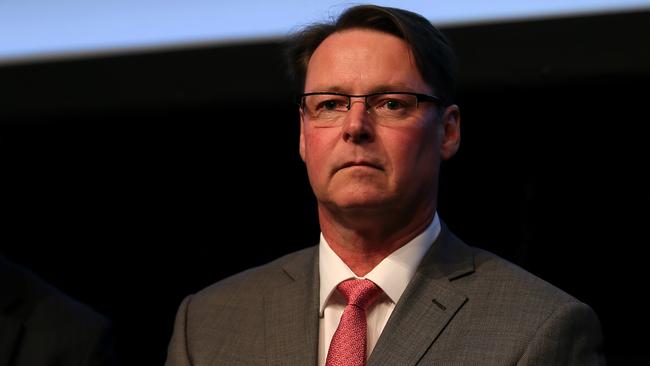Mining industry veteran says Australian nickel is one big discovery away from a revival
The road hasn’t necessarily ended for Australian nickel and one good discovery by a junior explorer could still change everything, says industry veteran Chris Cairns.

Australia’s nickel industry isn’t quite dead yet, according to mining industry veteran Chris Cairns, who says a single great discovery could change the fortunes of the beleaguered sector even if BHP makes good on its warning it could close its Nickel West operations.
Mr Cairns told a mining conference in Perth this week that the likely demise of Australian nickel had been “grossly exaggerated” and there were still prospects of a resurgence in the industry, despite the grim short-term outlook in the face of the flood of metal coming from Indonesia.
Falling prices have forced the closure of a suite of Australian nickel mines this year, at a cost of more than 1500 jobs so far. And BHP on Thursday flagged the potential closure of its Nickel West operations in Western Australia in the face of “structural changes” in the nickel industry, putting another 3000 jobs at risk.
But despite the grim outlook, there are still signs of interest in the Australian nickel sector.
On Friday, the federal government placed nickel on its critical minerals list, sending shares in producer IGO up 8.7 per cent and Nickel Industries up 7 per cent.
And earlier this month Alliance Nickel signed an agreement with Korean industrial giant Samsung for potential investment in the company’s nickel and cobalt deposit in WA, with the memorandum of understanding including potential offtake sales as well as direct investment in Alliance’s NiWest project, which sits near Glencore’s Murrin Murrin nickel mine.

Junior explorer Ardrea Resources said this week it was still in talks with Japanese giants Mitsubishi and Sumitomo over an investment deal for its nickel project outside Kalgoorlie in WA, and was still expecting to be able to finalise an investment agreement by the end of March.
Mr Cairns, a veteran mining and exploration executive who also sits on the mining industry’s Joint Ore Reserves Committee, told The Australian the exit of BHP from the Australian nickel sector would be damaging but not necessarily fatal to smaller companies still looking to develop nickel mines in Australia.
He said the suggestion that Australian sulphide deposits could no longer compete with Indonesian production from lower-grade laterite ore was not necessarily correct – but a new discovery of high-quality ore was needed to reinvigorate Australian nickel.
“People talk about the difference between nickel sulphide and laterite. But there’s an even finer distinction between nickel sulphide deposits,” he said.
The deposits run by BHP around the Kambalda district in WA feature low-grade disseminated ore bodies or underground operations mining volcanic lava channels – where the nickel content is higher grade, but found in narrow channels that are more costly to mine.
But sulphide deposits such as Norlisk in Siberia, Jinchuan in China and Voisey’s bay in Canada were still among the cheapest nickel mines in the world, Mr Cairns said. All three regions have nickel sourced from volcanic magmatic chambers – a “lake” compared to the “swimming pools” of lava channels.
“So the payability of nickel per vertical metre is huge. And they will always dominate the lower quartile of the cost curve,” he said.
Mr Cairns pointed to IGO’s Nova nickel mine as an Australian example of a magmatic deposit. While relatively small, and now nearing the end of its life, Nova is still far cheaper to run – per pound of nickel produced – than any other nickel mine in Australia.
But Nova has been the only significant nickel discovery of its type to result in a mine in a generation, and as mining costs rise, that has made Australia’s industry uncompetitive.
But Mr Cairns said that a discovery by IGO of a new magmatic system in the Kimberley last year raises hopes for a resurgence in WA if the system is as large as some believe – including Mr Cairns’ Stavely Minerals, which is also drilling prospects in the Kimberley region.
And while BHP is again considering the future of its Nickel West operations, Mr Cairns said they could still be viable in the hands of a smaller and more nimble operator.
“The industry is not absolutely reliant on BHP. Half of Nova’s concentrate went out to Glencore, through the Esperance port. All of its copper went to Trafigura. Panoramic’s nickel from Savannah – when it was operating – went out through Wyndham,” he said. “These magmatic nickel sulphide deposits are the very best of the best in terms of nickel deposits. They will dominate that lower quartile of costs.”


To join the conversation, please log in. Don't have an account? Register
Join the conversation, you are commenting as Logout